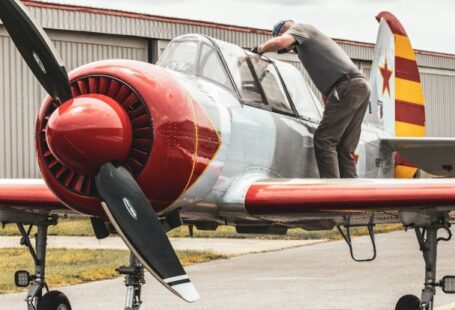Maintaining the structural integrity of aerospace components is crucial to ensure the safety and reliability of aircraft. Downtime due to structural failures can result in costly repairs, delays in operations, and even pose serious safety risks. To prevent such occurrences, aerospace industries employ various inspection techniques to detect potential issues before they escalate. In this article, we will explore the inspection techniques that are instrumental in preventing downtime in aerospace structures.
### Visual Inspections
Visual inspections serve as the first line of defense in identifying potential structural issues. Skilled inspectors visually examine the surface of aerospace structures for signs of corrosion, cracks, dents, or other forms of damage. By detecting these issues early on, necessary maintenance or repairs can be conducted promptly, preventing larger problems that may lead to downtime.
### Non-Destructive Testing (NDT)
Non-destructive testing techniques are essential in assessing the internal integrity of aerospace structures without causing damage. Methods such as ultrasonic testing, eddy current testing, radiographic testing, and magnetic particle inspection are commonly used in the aerospace industry to detect defects that may not be visible through visual inspections alone. NDT helps identify hidden flaws and weaknesses in components, allowing for timely intervention to prevent downtime.
### Thermography
Thermography is a valuable inspection technique that utilizes infrared imaging to detect temperature variations in aerospace structures. Temperature anomalies can indicate potential issues such as delamination, water ingress, or faulty electrical connections. By identifying these anomalies early on, maintenance teams can address underlying problems before they escalate, thereby minimizing the risk of downtime.
### Acoustic Emission Testing
Acoustic emission testing is a method that monitors the release of stress waves within aerospace structures. This technique is particularly useful in detecting the onset of damage, such as cracking or delamination, before they become critical. By listening to the acoustic emissions generated by the structure under load, inspectors can pinpoint areas of concern and take proactive measures to prevent downtime.
### Vibration Analysis
Vibration analysis is a predictive maintenance technique that is commonly used in the aerospace industry to monitor the structural health of components. By analyzing the frequency, amplitude, and patterns of vibrations in aerospace structures, inspectors can identify abnormalities that may indicate potential failures. Early detection through vibration analysis allows for targeted inspections and maintenance efforts to prevent downtime.
### Corrosion Monitoring
Corrosion is a common issue in aerospace structures, particularly in aircraft exposed to harsh environmental conditions. Regular corrosion monitoring techniques, such as electrochemical impedance spectroscopy and corrosion potential measurement, help identify areas susceptible to corrosion before significant damage occurs. By implementing corrosion prevention measures based on monitoring results, aerospace industries can mitigate the risk of downtime caused by structural degradation.
### Structural Health Monitoring (SHM)
Structural health monitoring systems are becoming increasingly prevalent in the aerospace industry as a proactive approach to prevent downtime. These systems use sensors to continuously monitor the structural condition of aircraft components in real-time. By collecting data on factors such as strain, temperature, and load distribution, SHM systems can detect changes indicative of potential issues and alert maintenance teams to take corrective actions promptly.
### Infrared Thermography for Composite Structures
Infrared thermography is a valuable tool for inspecting composite aerospace structures, which are increasingly used in modern aircraft for their lightweight and durable properties. By detecting defects such as delamination, voids, or impact damage in composite materials, infrared thermography allows for targeted repairs to be conducted before structural integrity is compromised. This proactive approach helps prevent downtime associated with composite structure failures.
In conclusion, the implementation of advanced inspection techniques is paramount in preventing downtime in aerospace structures. Visual inspections, NDT methods, thermography, acoustic emission testing, vibration analysis, corrosion monitoring, and structural health monitoring all play vital roles in identifying potential issues early on and facilitating timely maintenance interventions. By investing in comprehensive inspection programs and leveraging innovative technologies, aerospace industries can uphold the safety and reliability of aircraft while minimizing the risk of costly downtime.





